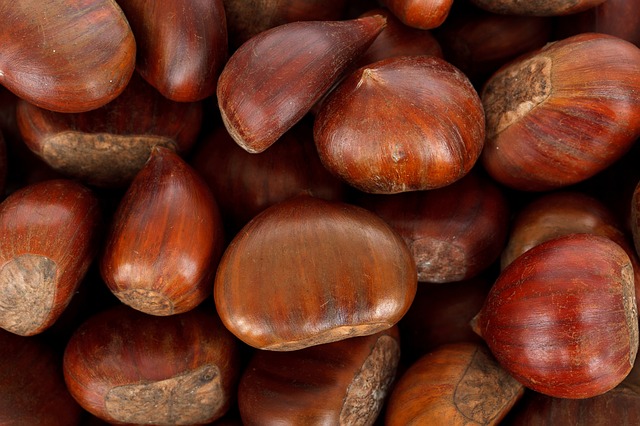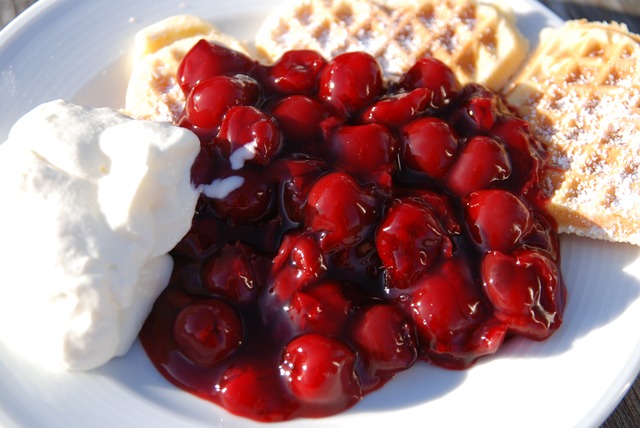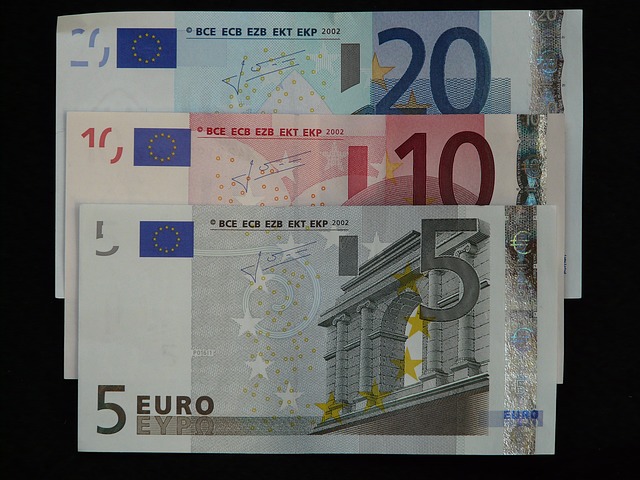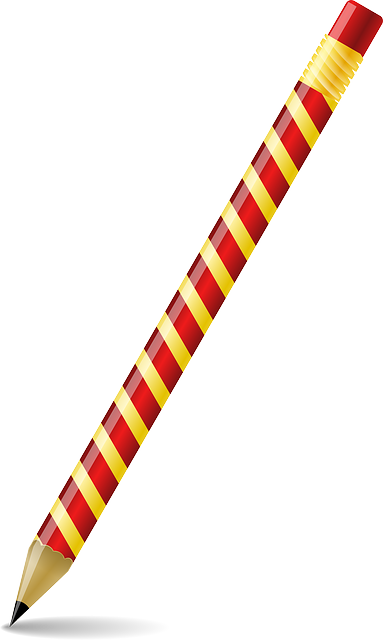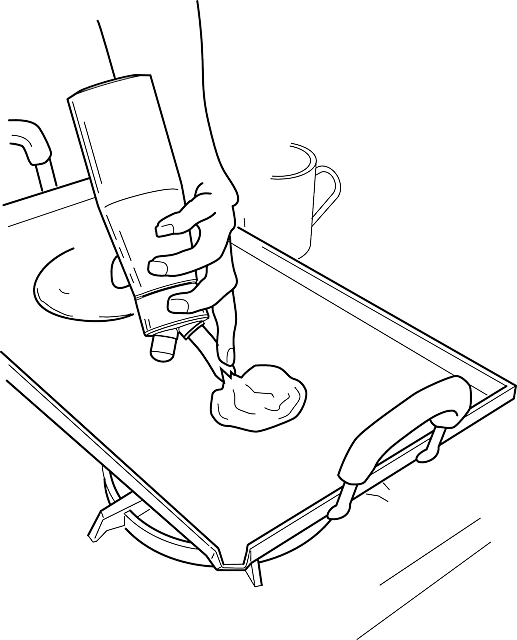رياضيات هندية
ظهرت الرياضيات الهندية Indian mathematics في شبه القارة الهندية من عام 1200 BCE حتى نهاية القرن 18. في الفترة الكلاسيكية من الرياضيات الهندية (400 حتى 1600م)، كانت هناك إسهامات هامة من قبل الباحثين أمثال أرياباتا، براماگوپتا، ماهاڤيرا، باسكارا الثاني، ماداڤا من سانگامگاما، ونيلاكانتا سوماياجي. نظام العد العشري المستخدم في عالمياً اليوم كان مسجلاً في الرياضيات الهندية. قام الرياضياتيون الهنود بإسهامات مبكرة في دراسة مفهوم الصفر كعدد،الأعداد السالبة،الحسابيات، والجبر. بالإضافة إلى ذلك، فقد شهدت حساب المثلثات تطوراً كبيراً في الهند، وبصفة خاصة، تم تطوير التعريفات الحديثة للجيب والدوال المثلثية. تم نقل هذه المفاهيم الرياضية إلى الشرق الأوسط، الصين، وأوروپا والتي أدت بورها إلى المزيد من التطورات والتي تمثل الآن أساسات للكثير من الحقول الرياضية.
ما قبل التاريخ
الفترة الڤيدية
الساميتية والبارمانية
سولبا سوترا
پينگالا
الرياضيات الجيانية (400 ق.م. - 200 م)
التقليد الشفهي
أنماط الحفظ
نوع سوترا
التقليد المكتوب: تعليق النثر
الترقيم ونظام العد العشري
مخطوطة بخشالي
مخطوطة بخشالي هي مخطوطة رياضية مكتوبة على لحاء البتيولا عـُثر عليها بالقرب من قرية بخشالي (بالقرب من مردان في پاكستان الحالية) في 1881. وترجع أهميتها لكونها أقدم مخطوطة موجودة في الرياضيات الهندية." أجزاء منها تم تسنينها إلى 224–383 م.
وهي أقدم مرشد على استخدام الهنود لرمز صفر.
الفترة الكلاسيكية (400–1600)
القرن الخامس والسادس
القرن السابع والثامن
القرن العاشر والحادي عشر
رياضيات كرالا (1300–1600)
انظر أيضاً
- سولبا سوترا
- مدرسة كرالا للفلك والرياضيات
- سوريا سيدانتا
- براماگوپتا
- سرينيڤاسا رامانوجان
- مخطوطة بخشالي
- قائمة الرياضياتيين الهنود
- العلوم والتكنولوجيا في الهند
- المنطق الهندي
- الفلك الهندي
- تاريخ الرياضيات
- قائمة الأعداد في المخطوطات الهندية
الهوامش
-
^ خطأ استشهاد: وسم
<ref>غير سليم؛ لا نص تم توفيره للمراجع المسماةplofker - ^ (Hayashi 205, pp. 360–361)
- ^ Plofker 2009, pp. 44–47
- ^ Bourbaki 1998, p. 46: "...our decimal system, which (by the agency of the Arabs) is derived from Hindu mathematics, where its use is attested already from the first centuries of our era. It must be noted moreover that the conception of zero as a number and not as a simple symbol of separation) and its introduction into calculations, also count amongst the original contribution of the Hindus."
- ^ Bourbaki 1998, p. 49: Modern arithmetic was known during medieval times as "Modus Indorum" or method of the Indians. Leonardo of Pisa wrote that compared to method of the Indians all other methods is a mistake. This method of the Indians is none other than our very simple arithmetic of addition, subtraction, multiplication and division. Rules for these four simple procedures was first written down by Brahmagupta during 7th century CE. "On this point, the Hindus are already conscious of the interpretation that negative numbers must have in certain cases (a debt in a commercial problem, for instance). In the following centuries, as there is a diffusion into the West (by intermediary of the Arabs) of the methods and results of Greek and Hindu mathematics, one becomes more used to the handling of these numbers, and one begins to have other "representation" for them which are geometric or dynamic."
- ^ "algebra" 2007. . Encyclopædia Britannica Online. 16 May 2007. Quote: "A full-fledged decimal, positional system certainly existed in India by the 9th century (CE), yet many of its central ideas had been transmitted well before that time to China and the Islamic world. Indian arithmetic, moreover, developed consistent and correct rules for operating with positive and negative numbers and for treating zero like any other number, even in problematic contexts such as division. Several hundred years passed before European mathematicians fully integrated such ideas into the developing discipline of algebra."
- ^ (Pingree 2003, p. 45) Quote: "Geometry, and its branch trigonometry, was the mathematics Indian astronomers used most frequently. Greek mathematicians used the full chord and never imagined the half chord that we use today. Half chord was first used by Aryabhata which made trigonometry much more simple. In fact, the Indian astronomers in the third or fourth century, using a pre-Ptolemaic Greek table of chords, produced tables of sines and versines, from which it was trivial to derive cosines. This new system of trigonometry, produced in India, was transmitted to the Arabs in the late eighth century and by them, in an expanded form, to the Latin West and the Byzantine East in the twelfth century."
- ^ (Bourbaki 1998, p. 126): "As for trigonometry, it is disdained by geometers and abandoned to surveyors and astronomers; it is these latter (Aristarchus, Hipparchus, Ptolemy) who establish the fundamental relations between the sides and angles of a right angled triangle (plane or spherical) and draw up the first tables (they consist of tables giving the chord of the arc cut out by an angle on a circle of radius r, in other words the number ; the introduction of the sine, more easily handled, is due to Hindu mathematicians of the Middle Ages)."
-
^ خطأ استشهاد: وسم
<ref>غير سليم؛ لا نص تم توفيره للمراجع المسماةHayashiEncy - ^ Devlin, Hannah (2017-09-13). "Much ado about nothing: ancient Indian text contains earliest zero symbol". The Guardian. ISSN 0261-3077. Retrieved 2017-09-14.
- ^ ". Bodleian Library. 2017-09-14. Retrieved 2017-09-14.
المصادر
- Bourbaki, Nicolas (1998), Elements of the History of Mathematics, Berlin, Heidelberg, and New York: Springer-Verlag, 301 pages, ISBN 3-540-64767-8, https://www.amazon.com/Elements-History-Mathematics-Nicolas-Bourbaki/dp/3540647678/.
- Boyer, C. B.; Merzback (fwd. by Isaac Asimov), U. C. (1991), History of Mathematics, New York: John Wiley and Sons, 736 pages, ISBN 0-471-54397-7.
- Bressoud, David (2002), "Was Calculus Invented in India?", The College Mathematics Journal (Math. Assoc. Amer.) 33 (1): 2–13, doi:.
- Bronkhorst, Johannes (2001), "Panini and Euclid: Reflections on Indian Geometry", Journal of Indian Philosophy (Springer Netherlands) 29 (1–2): 43–80, doi:.
- Burnett, Charles (2006), "The Semantics of Indian Numerals in Arabic, Greek and Latin", Journal of Indian Philosophy (Springer-Netherlands) 34 (1–2): 15–30, doi:.
- Burton, David M. (1997), The History of Mathematics: An Introduction, The McGraw-Hill Companies, Inc., pp. 193–220.
- Cooke, Roger (2005), The History of Mathematics: A Brief Course, New York: Wiley-Interscience, 632 pages, ISBN 0-471-44459-6.
- Dani, S. G. (25 July 2003), "On the Pythagorean triples in the Śulvasūtras", Current Science 85 (2): 219–224, http://www.ias.ac.in/currsci/jul252003/219.pdf.
- Datta, Bibhutibhusan (December 1931), "Early Literary Evidence of the Use of the Zero in India", The American Mathematical Monthly 38 (10): 566–572, doi:.
- Datta, Bibhutibhusan; Singh, Avadesh Narayan (1962), History of Hindu Mathematics : A source book, Bombay: Asia Publishing House.
- De Young, Gregg (1995), "Euclidean Geometry in the Mathematical Tradition of Islamic India", Historia Mathematica 22 (2): 138–153, doi:.
- Encyclopædia Britannica (Kim Plofker) (2007), "mathematics, South Asian", Encyclopædia Britannica Online: 1–12, http://www.britannica.com/eb/article-9389286, retrieved on 18 May 2007.
- Filliozat, Pierre-Sylvain (2004), "Ancient Sanskrit Mathematics: An Oral Tradition and a Written Literature", in Chemla, Karine; Cohen, Robert S.; Renn, Jürgen et al., History of Science, History of Text (Boston Series in the Philosophy of Science), Dordrecht: Springer Netherlands, 254 pages, pp. 137–157, pp. 360–375, ISBN 978-1-4020-2320-0.
- Fowler, David (1996), "Binomial Coefficient Function", The American Mathematical Monthly 103 (1): 1–17, doi:.
- Hayashi, Takao (1995), The Bakhshali Manuscript, An ancient Indian mathematical treatise, Groningen: Egbert Forsten, 596 pages, ISBN 90-6980-087-X.
- Hayashi, Takao (1997), "Aryabhata's Rule and Table of Sine-Differences", Historia Mathematica 24 (4): 396–406, doi:.
- Hayashi, Takao (2003), "Indian Mathematics", in Grattan-Guinness, Ivor, Companion Encyclopedia of the History and Philosophy of the Mathematical Sciences, 1, pp. 118–130, Baltimore, MD: The Johns Hopkins University Press, 976 pages, ISBN 0-8018-7396-7.
- Hayashi, Takao (2005), "Indian Mathematics", in Flood, Gavin, The Blackwell Companion to Hinduism, Oxford: Basil Blackwell, 616 pages, pp. 360–375, pp. 360–375, ISBN 978-1-4051-3251-0.
- Henderson, David W. (2000), "Square roots in the Sulba Sutras", in Gorini, Catherine A., Geometry at Work: Papers in Applied Geometry, 53, pp. 39–45, Washington DC: Mathematical Association of America Notes, 236 pages, pp. 39–45, ISBN 0-88385-164-4.
- Joseph, G. G. (2000), The Crest of the Peacock: The Non-European Roots of Mathematics, Princeton, NJ: Princeton University Press, 416 pages, ISBN 0-691-00659-8, https://www.amazon.com/Crest-Peacock-George-Gheverghese-Joseph/dp/0691006598/.
- Katz, Victor J. (1995), "Ideas of Calculus in Islam and India", Mathematics Magazine (Math. Assoc. Amer.) 68 (3): 163–174, doi:, https://www.jstor.org/stable/2691411.
- Katz, Victor J., ed. (2007), The Mathematics of Egypt, Mesopotamia, China, India, and Islam: A Sourcebook, Princeton, NJ: Princeton University Press, 685 pages, pp 385–514, ISBN 0-691-11485-4.
- Keller, Agathe (2005), "Making diagrams speak, in Bhāskara I's commentary on the Aryabhaṭīya", Historia Mathematica 32 (3): 275–302, doi:.
- Kichenassamy, Satynad (2006), "Baudhāyana's rule for the quadrature of the circle", Historia Mathematica 33 (2): 149–183, doi:.
- Pingree, David (1971), "On the Greek Origin of the Indian Planetary Model Employing a Double Epicycle", Journal of Historical Astronomy 2 (1): 80–85.
- Pingree, David (1973), "The Mesopotamian Origin of Early Indian Mathematical Astronomy", Journal of Historical Astronomy 4 (1): 1–12, doi:.
- Pingree, David; Staal, Frits (1988), "Reviewed Work(s): The Fidelity of Oral Tradition and the Origins of Science by Frits Staal", Journal of the American Oriental Society 108 (4): 637–638, doi:.
- Pingree, David (1992), "Hellenophilia versus the History of Science", Isis 83 (4): 554–563, doi:, Bibcode: 1992Isis...83..554P
- Pingree, David (2003), "The logic of non-Western science: mathematical discoveries in medieval India", Daedalus 132 (4): 45–54, doi:, https://www.questia.com/googleScholar.qst?docId=5007155010.
- Plofker, Kim (1996), "An Example of the Secant Method of Iterative Approximation in a Fifteenth-Century Sanskrit Text", Historia Mathematica 23 (3): 246–256, doi:.
- Plofker, Kim (2001), "The "Error" in the Indian "Taylor Series Approximation" to the Sine", Historia Mathematica 28 (4): 283–295, doi:.
- Plofker, K. (2007), "Mathematics of India", in Katz, Victor J., The Mathematics of Egypt, Mesopotamia, China, India, and Islam: A Sourcebook, Princeton, NJ: Princeton University Press, 685 pages, pp 385–514, pp. 385–514, ISBN 0-691-11485-4.
- Plofker, Kim (2009), Mathematics in India: 500 BCE–1800 CE, Princeton, NJ: Princeton University Press. Pp. 384., ISBN 0-691-12067-6.
- Price, John F. (2000), "Applied geometry of the Sulba Sutras", in Gorini, Catherine A., Geometry at Work: Papers in Applied Geometry, 53, pp. 46–58, Washington DC: Mathematical Association of America Notes, 236 pages, pp. 46–58, ISBN 0-88385-164-4.
- Roy, Ranjan (1990), " by Leibniz, Gregory, and Nilakantha", Mathematics Magazine (Math. Assoc. Amer.) 63 (5): 291–306, doi:, https://www.jstor.org/stable/2690896.
- Singh, A. N. (1936), "On the Use of Series in Hindu Mathematics", Osiris 1 (1): 606–628, doi:
- Staal, Frits (1986), The Fidelity of Oral Tradition and the Origins of Science, Mededelingen der Koninklijke Nederlandse Akademie von Wetenschappen, Afd. Letterkunde, NS 49, 8. Amsterdam: North Holland Publishing Company, 40 pages.
- Staal, Frits (1995), "The Sanskrit of science", Journal of Indian Philosophy (Springer Netherlands) 23 (1): 73–127, doi:.
- Staal, Frits (1999), "Greek and Vedic Geometry", Journal of Indian Philosophy 27 (1–2): 105–127, doi:.
- Staal, Frits (2001), "Squares and oblongs in the Veda", Journal of Indian Philosophy (Springer Netherlands) 29 (1–2): 256–272, doi:.
- Staal, Frits (2006), "Artificial Languages Across Sciences and Civilisations", Journal of Indian Philosophy (Springer Netherlands) 34 (1): 89–141, doi:.
- Stillwell, John (2004), Berlin and New York: Mathematics and its History (2 ed.), Springer, 568 pages, ISBN 0-387-95336-1, https://www.amazon.com/Mathematics-its-History-John-Stillwell/dp/0387953361/.
- Thibaut, George (1984) [1875], Mathematics in the Making in Ancient India: reprints of 'On the Sulvasutras' and 'Baudhyayana Sulva-sutra', Calcutta and Delhi: K. P. Bagchi and Company (orig. Journal of Asiatic Society of Bengal), 133 pages.
- van der Waerden, B. L. (1983), Geometry and Algebra in Ancient Civilisations, Berlin and New York: Springer, 223 pages, ISBN 0-387-12159-5
- van der Waerden, B. L. (1988), "On the Romaka-Siddhānta", Archive for History of Exact Sciences 38 (1): 1–11, doi:
- van der Waerden, B. L. (1988), "Reconstruction of a Greek table of chords", Archive for History of Exact Sciences 38 (1): 23–38, doi:
- Van Nooten, B. (1993), "Binary numbers in Indian antiquity", Journal of Indian Philosophy (Springer Netherlands) 21 (1): 31–50, doi:
- Whish, Charles (1835), "On the Hindú Quadrature of the Circle, and the infinite Series of the proportion of the circumference to the diameter exhibited in the four S'ástras, the Tantra Sangraham, Yucti Bháshá, Carana Padhati, and Sadratnamála", Transactions of the Royal Asiatic Society of Great Britain and Ireland 3 (3): 509–523, doi:
- Yano, Michio (2006), "Oral and Written Transmission of the Exact Sciences in Sanskrit", Journal of Indian Philosophy (Springer Netherlands) 34 (1–2): 143–160, doi:
قراءات إضافية
خط مرجعية بالسنسكريتية
- Keller, Agathe (2006), Expounding the Mathematical Seed. Vol. 1: The Translation: A Translation of Bhaskara I on the Mathematical Chapter of the Aryabhatiya, Basel, Boston, and Berlin: Birkhäuser Verlag, 172 pages, ISBN 3-7643-7291-5.
- Keller, Agathe (2006), Expounding the Mathematical Seed. Vol. 2: The Supplements: A Translation of Bhaskara I on the Mathematical Chapter of the Aryabhatiya, Basel, Boston, and Berlin: Birkhäuser Verlag, 206 pages, ISBN 3-7643-7292-3.
- Neugebauer, Otto; Pingree (eds.), David (1970), The Pañcasiddhāntikā of Varāhamihira, New edition with translation and commentary, (2 Vols.), Copenhagen.
- Pingree, David (ed) (1978), The Yavanajātaka of Sphujidhvaja, edited, translated and commented by D. Pingree, Cambridge, MA: Harvard Oriental Series 48 (2 vols.).
- Sarma, K. V. (ed) (1976), Āryabhaṭīya of Āryabhaṭa with the commentary of Sūryadeva Yajvan, critically edited with Introduction and Appendices, New Delhi: Indian National Science Academy.
- Sen, S. N.; Bag (eds.), A. K. (1983), The Śulbasūtras of Baudhāyana, Āpastamba, Kātyāyana and Mānava, with Text, English Translation and Commentary, New Delhi: Indian National Science Academy.
- Shukla, K. S. (ed) (1976), Āryabhaṭīya of Āryabhaṭa with the commentary of Bhāskara I and Someśvara, critically edited with Introduction, English Translation, Notes, Comments and Indexes, New Delhi: Indian National Science Academy.
- Shukla, K. S. (ed) (1988), Āryabhaṭīya of Āryabhaṭa, critically edited with Introduction, English Translation, Notes, Comments and Indexes, in collaboration with K.V. Sarma, New Delhi: Indian National Science Academy.
وصلات خارجية
- Science and Mathematics in India
- An overview of Indian mathematics, MacTutor History of Mathematics Archive, St Andrews University, 2000.
- Index of Ancient Indian mathematics, MacTutor History of Mathematics Archive, St Andrews University, 2004.
- Indian Mathematics: Redressing the balance, Student Projects in the History of Mathematics. Ian Pearce. MacTutor History of Mathematics Archive, St Andrews University, 2002.
- Indian Mathematics on In Our Time at the BBC.
- InSIGHT 2009, a workshop on traditional Indian sciences for school children conducted by the Computer Science department of Anna University, Chennai, India.
- Mathematics in ancient India by R. Sridharan
- Combinatorial methods in ancient India
- Mathematics before S. Ramanujan
| تاريخ العلوم |
|
|
| خلفية |
|---|
| النظريات/فهم اجتماع |
| التأريخ |
| الفهم الكاذب |
| حسب العصر |
| في الثقافات المبكرة |
| في القـِدم الكلاسيكي |
| في العصور الوسطى |
| في الإسلام |
| في عصر النهضة |
| الثورة الفهمية |
| حسب الموضوع |
| العلوم الطبيعية |
| فهم الفلك |
| فهم الأحياء |
| الكيمياء |
| فهم البيئة |
| الجغرافيا |
| الجيولوجيا |
| Paleontology |
| الفيزياء |
| العلوم الاجتماعية |
| فهم الاقتصاد |
| فهم اللسانيات |
| العلوم السياسية |
| فهم النفس |
| فهم الاجتماع |
| التكنولوجيا |
| الفهم الزراعي |
| علوم الحاسب |
| فهم المواد |
| الطب |
| صفحات للتصفح |
| الخطوط الزمنية |
| البوابة |
| تصنيفات |







